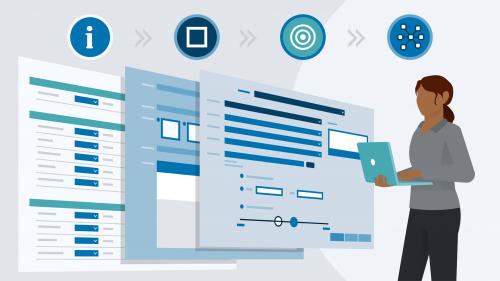
Lynda - Introduction to SuccessFactors Foundation Module
SAP SuccessFactors Foundation—a key module in the SAP suite of HR enterprise software—boasts features that help organizations find and retain the best people. In this course, get a system-focused look at the module's most notable capabilities, as well as practical use cases for each feature. See examples of how individuals in different roles—from managers to system administrators—experience SAP SuccessFactors Foundation functionality on both desktop and mobile. Learn the most essential concepts surrounding each feature and discover what to consider when implementing them.
Categories: Tutorials » IT and Software
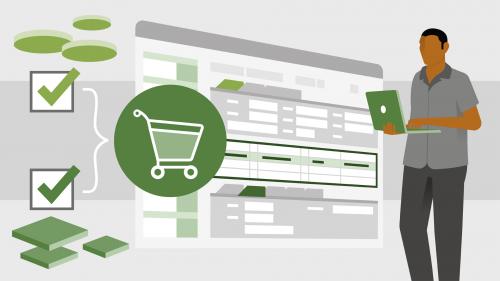
Lynda - Material Requirements Planning (MRP) Strategies in SAP
https://www.lynda.com/ERP-tutorials/Material-Requirements-Planning-MRP-Strategies-SAP/2802026-2.html
Discover how to calculate the materials required for product manufacturing with greater accuracy and speed within SAP. The SAP ERP tool has many different material requirements planning (MRP) strategies that are preconfigured and ready to implement; you just need to learn how to choose the right one. This course guides you through the configuration options and business processes behind the make-to-stock (MTS), make-to-order (MTO), and component-level MRP strategies. You can also explore a hybrid strategy for multi-use materials, for use with components in production and spare parts. Once you have completed this course, you should be able to pair the right material requirements planning strategy for every possible business scenario.

Lynda - Skilled Trades: Manufacturing Careers
Many of the objects that make up our world—from the coffee mugs in our cupboards to the laptops on our desks—were transformed into finished products via the wonders of modern manufacturing. But while the manufacturing industry is seen as a critical part of society, many folks still associate manufacturing jobs with tedious assembly-line labor. In reality, today’s advanced manufacturing roles boast higher-than-average pay rates, a longer job tenure than most, and one of the highest percentage of workers eligible for health benefits. In this course, Kipp Bradford acquaints job seekers with opportunities in the manufacturing trades, explaining what these jobs look like, which challenges and opportunities they present, and how to jump-start a career in this growing field.

Lynda - After Effects: Character Animation Techniques
Discover how easy it is to bring your characters to life in Adobe After Effects. Join Angie Taylor as she shares tips and tricks for animating within this powerful motion graphics and compositing application. Learn how to set up anchor points, link the different parts of your characters together in a parental hierarchy, and create a simple character rigging system. Get tips for using the Puppet tool, including how to create a sense of depth in your animations and fix glitches with Starch pins. Plus, discover how to link master properties to your Puppet tool rig; leverage RubberHose, a rigging script for After Effects; and easily automate a lip-sync animation.
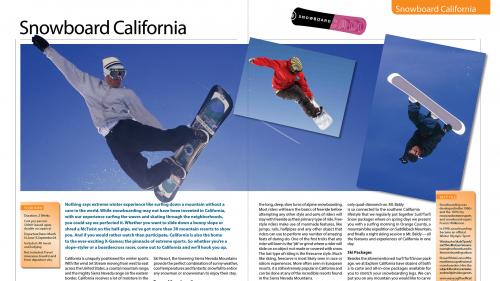
Lynda - Designing with Grids in InDesign
Take the guesswork out of your InDesign layouts. Whether it's a business card, a poster, a digital magazine, or a printed book, your design will look better if you use a grid. Join designer Nigel French as he takes you through a brief history of grids—why you should use them and when you should break them. He shows you how to establish margins and columns, set up a modular grid, and how to fit text to a baseline grid. Plus, learn how to use the powerful Gridify tool and break the grid for graphic effect using images.
Categories: Tutorials » Other Tutorials
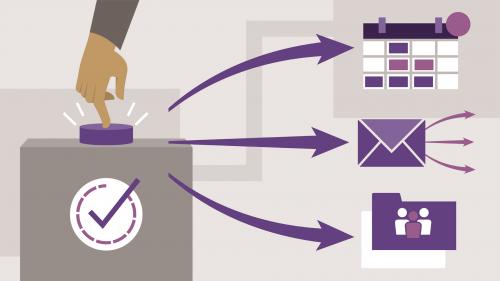
Lynda - Microsoft Flow: Button Flows
Button flows allow for an automated sequence to be triggered by a user action, or button, when the user is ready for the automation to take place. This popular way of creating and deploying automation with Microsoft Flow saves businesses time and make repetitive tasks happen quicker and more efficiently. In this course, Gini von Courter steps through how to create button flows. Learn how to create a button flow using a template and check, save, and test your flow. Plus, see how to create a button flow on a mobile device, build a flow that uses a trigger token, create a flow that captures input, and set up and pair a Flic button for use with Microsoft Flow.
Categories: Tutorials » Other Tutorials
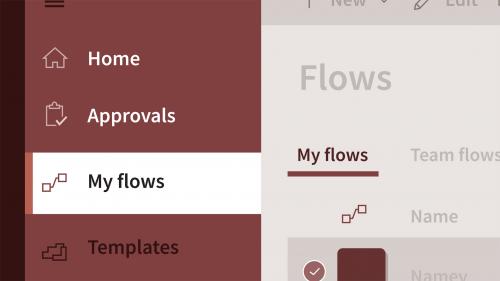
Lynda - Microsoft Flow: Approval Flows
With Microsoft Flow, you can streamline your workflow for approving processes and documents for your business. In this course, learn how to create, test, and edit both simple and complex approval flows, and pick up best practices for integrating approval flows into your business. Instructor Gini von Courter shows how to create an approval flow in SharePoint, and grant (or reject) approval via email, the Flow approvals center, or a mobile app. Gini also demonstrates how Flow integrates with OneDrive, how to share a flow with your team, and how to leverage a few advanced techniques, including creating a parallel approval branch in a flow.
Categories: Tutorials » IT and Software

Lynda - Text Analytics and Predictions with Python Essential Training
Text is a rich source of insights for businesses. Websites, social media, emails, and chats all contain valuable customer data. But to reap the rewards, you need to be able to analyze large amounts of unstructured text. Text mining is an essential skill for anyone working in big data and data science. This course teaches text-mining techniques to extract, cleanse, and process text using Python and the scikit-learn and nltk libraries. Kumaran Ponnambalam explains how to perform text analytics using popular techniques like word cloud and sentiment analysis. He then shows how to make predictions with text data using clustering, classification, and recommendations—otherwise known as predictive text. Along the way, he introduces important text analytics concepts such as lemmatization and n-grams.
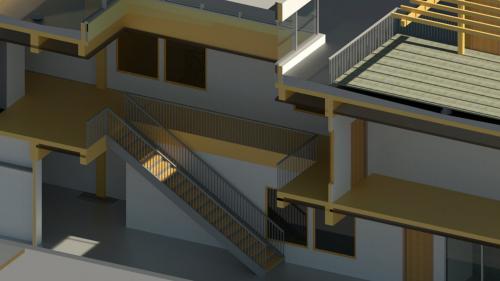
Lynda - CAD and BIM: Workflow for Rooms in Facilities Management
Revit offers a workflow that’s uniquely suited to facilities management, particularly room and area design. You can take a linked CAD file and generate a detailed room schedule by defining room-bounding parameters and areas. In this course, you can learn how to use Revit to develop room plans and schedules from CAD models. Discover how to retrieve room data from the model, create a room floor plan, tag rooms, add new rooms and departments, and associate spaces with occupancy. Instructor Shaun Bryant also explains how to generate detailed room schedules from your design for sharing with clients and colleagues.

Lynda - Creating a Short Film: 10 VFX Effects
Get a practical look at the world of visual effects (VFX). In this installment of the 13-part Creating a Short Film series, filmmaker Chad Perkins focuses on how to tackle the effects in the VFX portion of the post-production workflow. Throughout the course, Chad demonstrates how to create the visual effects seen in The Assurance, the short film featured throughout the series. Chad goes over a variety of common VFX tools and how to really sell effects shots. He digs into how to create magical effects with Trapcode Particular, Trapcode Form, and with native After Effects tools, as well as how to create a cool explosion shot by compositing live action fire footage, create swirling particles in Cinema 4D, build a custom lens flare using Optical Flares, and much more.

Lynda - Introduction to AWS for Non-Engineers: 2 Security
As part of any good IT infrastructure, security plays an important part in creating a stable technical environment. In the AWS Certified Cloud Practitioner exam, the Security module makes up nearly a fourth of the exam questions. With cloud computing becoming more relevant to many professionals’ lives, even if tangentially, it's a vital topic to explore. This course, the second in a four-part series designed to help professionals in non-technical roles, provides you with a high-level grasp of the major security services and concepts in AWS. Instructor Hiroko Nishimura—author of Intro to AWS for Newbies—provides an overview of security in the cloud. She then delves into the different security services available: Identity Access Management (IAM), Shield, Inspector, and more. Note: This course also maps to the Security module of the AWS Certified Cloud Practitioner exam. Taking all four courses in the Introduction to AWS for Non-Engineers series will help you prepare for the exam.
Categories: Tutorials » Development

Lynda - Git: Branches, Merges, and Remotes
Git—the popular and free version control software—unlocks powerful code management tools, including branching, merging, and remote repositories. The course explains how to use these features and commands for change tracking and collaboration. Learn to navigate the commit tree and review the log to find specific commits. Find out how to create branches to test new ideas without impacting the main project and merge those changes into the project if they work out. You can also reset branches to undo changes and stash changes that are not ready to be committed in temporary storage. Instructor Kevin Skoglund also shows how to set up a remote repository to work with another developer and implement a collaboration workflow to ensure you are working together effectively.
Categories: Tutorials » Development

Lynda - Cucumber Essential Training
Cucumber is a tool for behavior-driven development (BDD), which allows you to write assertions in plain language that are then testable by code. By making written requirements actually testable, it provides a common language between business and engineering professionals. In this course, learn how to use Cucumber to implement agile practices like BDD, test-driven development (TDD), and acceptance test-driven development (ATDD). Instructor Shashi Shekhar goes over the basics of BDD, TDD, and ATDD, and then dives into the Cucumber workflow. He also shows how to map user stories to features, add hooks, generate reports, and apply techniques to make BDD maintainable.
Categories: Tutorials » Other Tutorials

Lynda - Building Resilience as a Leader
Research tells us that resilience is one of the key attributes of successful leaders. Resilience can help you face challenges, navigate obstacles, and thrive in your role. But it can also help you lead your team and your business to bigger and better results. In this course, psychologist and executive coach Gemma Leigh Roberts helps you develop a resilient mindset, a resilient team, and a resilient organization, which can weather risk and change. The tips Gemma offers are approachable and actionable—designed for busy leaders who need an extra edge to survive and thrive in challenging times.
Categories: Tutorials » Photography and Video

Lynda - Learning Lightroom Mobile
Get up and running with Adobe Lightroom for mobile. In this course, Jan Kabili shows how to use this popular app to create, edit, and share high-quality images from your iOS or Android device. Jan starts with the basics, explaining how to add and capture photos with the app, as well as how to work with the general editing controls. Next, she dives into basic photo editing techniques, including how to adjust lighting, reduce noise, sharpen your images, and copy edits to other photos. Plus, learn about selective editing with radial gradients, converting color photos to black and white, organizing your photos into albums, and sharing your images.
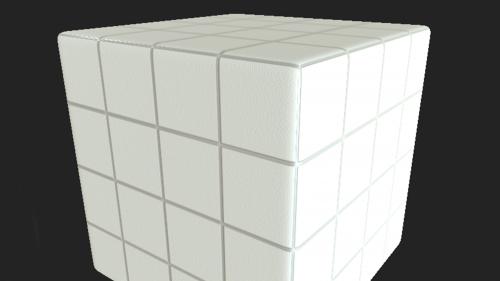
Lynda - Substance Designer for Architectural Visualization
Creating procedural materials is an important part of a modern visualization workflow, for both real-time and rendered applications. In this course, learn how to quickly create a variety of architectural materials in Allegorithmic Substance Designer, for application in design-visualization projects. Structured as a series of case studies on common material types such as carpet, vinyl flooring, and ceiling tile, this course incorporates techniques for crafting custom materials as needed for a design while staying true to the manufacturer's intentions. Discover how to create height, normal, and ambient occlusion maps for your substances, mask pattern components to simulate custom material blending such as mixed tile, and more.
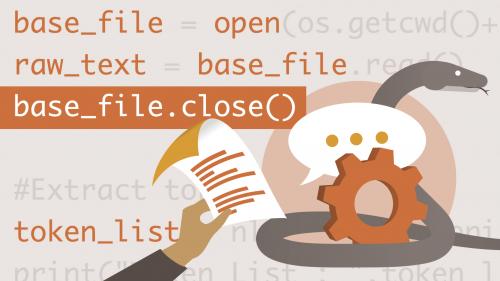
Lynda - Processing Text with Python Essential Training
In the world of big data, more and more information is consumed and analyzed in text form. Websites, social media, emails, and chats have become the key sources for data and insights. If you work with data, then understanding how to deal with unstructured text data is essential. In this course, instructor Kumaran Ponnambalam helps you build your text mining skill set, covering key techniques for extracting, cleansing, and processing text in Python. Kumaran reviews key text processing concepts like tokenization and stemming. He also looks at techniques for converting text into analytics-ready form, including n-grams and TF-IDF. Along the way, he provides examples of these techniques using Python and the NLTK library.

Lynda - IT Security Careers and Certifications: First Steps
Demand for information security professionals has never been higher—and it's only projected to grow. Interested in finding a job in this exciting new field? Or simply advancing to the next level? IT security expert Marc Menninger explains how to launch and develop a successful career in information security. Learn about the nine most common security jobs and the duties and qualifications for each role. Learn which security certifications appear in job listings and which ones will help you get the job you want. Follow example career paths to learn how others have progressed: from IT hobbyist to help-desk technician to analyst, systems architect, and more. Marc closes with career advice specific to information security, which will help you succeed in this dynamic and high-demand industry.
Categories: Tutorials » IT and Software

Lynda - Docker for Data Scientists
In a field where reproducible results are essential, Docker is rapidly emerging as one of the top tools for bringing efficiency to the work that data science teams—particularly those working in machine learning (ML)—are doing. Creating and developing ML models is often messy. Seasoned data scientists know that different versions of the same software can produce different results. With Docker, you can include the right versions of each needed dependency and library, so no one ever has to do any configuration. After the Dockerfile is built, you'll have exactly what you need. In this course, Jonathan Fernandes helps data scientists get up and running with Docker, demonstrating how to build a Dockerized ML application that can easily be shared. Along the way, he shares common use cases for the tool. Upon wrapping up this course, you'll be prepared to leverage the power of containers in your other ML projects.

Lynda - Intro to Virtual Reality (VR) Filmmaking
VR is poised to dramatically alter the way that individuals and organizations work and play. In this course, learn how to leverage the immersive power of VR as a storyteller. Instructor Emmanuel Henri delves into the tools, techniques, and assets you need to create your first film in VR. To begin, Emmanuel provides an overview of the filmmaking process and the basics of working with VR and 3D space. He then steps through the pre-production, production, and post-production processes, ensuring that you have a solid grasp of all that's involved with bringing your ideas to life in this exciting medium. Learn about the process of creating storyboards, modeling your characters and environments, texturing your models, and more.
Categories: Tutorials » Other Tutorials

Lynda - Switching Your Career
You've finally identified your dream job—in another industry or profession. How do you get that job and stand out from candidates with more experience? The secret to successfully switching careers lies in identifying your transferrable skills and creating personal and professional personas that work in your new industry. Dr. Dawn Graham, author of Switchers: How Smart Professionals Change Careers and Seize Success, explains why the same old job-hunting rules don’t apply when you’re making a career change. You need to be able to convince employers you can make the leap to a new role or industry. To help, Dr. Dawn provides insider information from a hiring manager’s point of view and illuminates the psychological principles that underlie the job search process. She also provides tips for rebranding yourself and nailing the interview by turning tough questions to your advantage. Get ready to make the switch with these smart, actionable tips.
Categories: Tutorials » Other Tutorials

Lynda - Learning Moodle 3.7
Moodle, the popular learning management system (LMS), has revolutionized education. Instructors can create online classes for anywhere, anytime learning; add assessments and activities; track student progress; calculate grades; and more. Students can access resources, complete assignments, and communicate with classmates and instructors—all from a single digital platform. This course demonstrates how instructors can get started using Moodle 3.7, including newer features such as messaging with audio and images. LinkedIn Learning staff author Oliver Schinkten shows how to set up an instructor profile, create a course, and adjust course settings. Then find out how to add files, post announcements, and make quizzes. Finally, learn how to enroll students, grade assignments, and run reports. Along the way, Oliver includes tips to make your Moodle experience even more efficient and effective.

Lynda - Selling and Marketing Your Products on Amazon
You’ve already done the hard part—creating a product that customers will love. In this course, learn how to successfully shepherd that product into one of the internet’s most bustling marketplaces: Amazon. Ryan Mulvany—the founder of Quiverr, a top Amazon brand management and marketing agency—serves as your guide, showing you each of the key steps you need to follow to market and sell your products on the site. Learn how to create product listings and rank your products in a way that maximizes their potential; choose the right distribution strategy, whether it’s selling directly or using Fulfillment by Amazon (FBA); price your products; and look for smart ways to advertise.

Lynda - DevOps Foundations: Incident Management
Uptime is critical for modern systems, but downtime and security incidents are inevitable. Your users’ experience depends on your ability to respond quickly, confidently, and consistently when things go awry. In this course, learn how to handle unexpected crises in information systems from a DevOps perspective. Instructor Ernest Mueller steps through the overall incident response process, explaining how to define what constitutes an incident for your organization and select the tools you'll need to mitigate these high-stakes problems. He also explains how to detect and report incidents, communicate with users and internal employees about issues, troubleshoot problems, and continuously improve your incident management process.
Top Rated News
- Sean Archer
- AwTeaches
- Learn Squared
- PhotoWhoa
- Houdini-Course
- Photigy
- August Dering Photography
- StudioGuti
- Creatoom
- Creature Art Teacher
- Creator Foundry
- Patreon Collections
- Udemy - Turkce
- BigFilms
- Jerry Ghionis
- ACIDBITE
- BigMediumSmall
- Boom Library
- Globe Plants
- Unleashed Education
- The School of Photography
- Visual Education
- LeartesStudios - Cosmos
- All Veer Fancy Collection!
- All OJO Images
- All ZZVe Vectors


